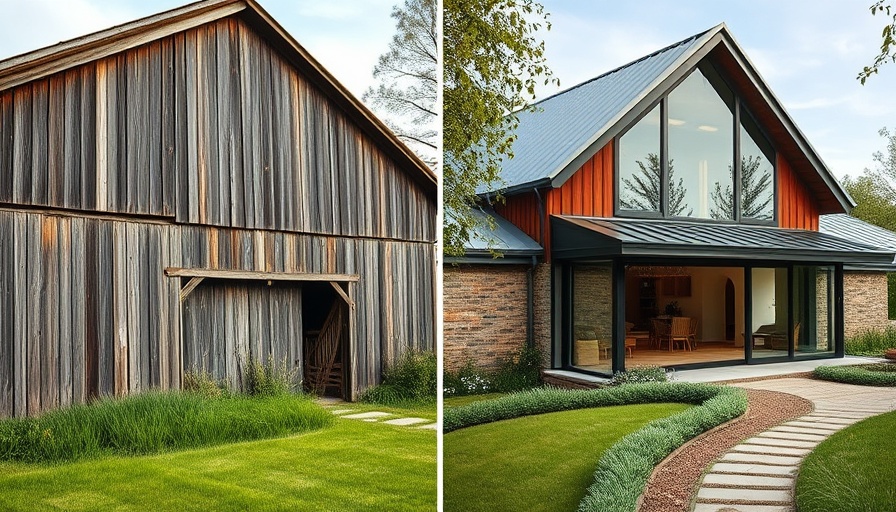
The Allure of Barn Conversions
With the growing trend of transforming old structures into beautiful, functional living spaces, barn conversions have captured the imagination of many homeowners and architects alike. These rustic buildings, often steeped in history, provide a unique opportunity to embrace sustainability while enjoying the charm of rural aesthetics. The process of turning a barn into a home is not just about renovation; it's about reimagining spaces with a commitment to sustainability and energy efficiency.
Understanding the Basics of Barn Conversions
The concept of barn conversion involves more than just structural changes. It requires an understanding of the original architecture and working within its framework to deliver a modern living environment without disrupting its historic character. Homeowners can opt for a range of design styles, from contemporary minimalism to traditional farmhouse looks— all while incorporating eco-friendly materials and methods.
Choosing Energy-Efficient Solutions
Incorporating energy efficiency is crucial in any renovation project. When converting a barn, focus on sustainable energy solutions like solar panels and energy-efficient appliances. By implementing these measures, homeowners can significantly reduce their carbon footprint and contribute to a more environmentally-friendly future. Consider the installation of efficient cold storage systems— not only do they help save energy, but they also play a part in sustainable food practices.
Utilizing Reclaimed Materials for Authenticity
One of the defining features of successful barn conversions is the use of reclaimed materials. These materials can range from the original barn wood, which adds warmth and character, to other eco-friendly alternatives for roofing, flooring, and fittings. Using reclaimed materials promotes sustainability and helps in reducing resource consumption, which is a vital aspect of modern-day environmental strategies.
Design Considerations for Kitchen and Laundry Areas
When designing kitchen and laundry spaces in a barn conversion, it’s essential to keep functionality in mind. These areas are often the heart of the home; thus, incorporating energy-efficient appliances and sustainable practices like compostable packaging for food storage can make a significant difference. A well-designed kitchen can also reduce food waste, making it a sustainable food service area at home.
Decoding Financial Benefits
While the initial costs of barn conversions may be substantial, the long-term financial benefits can be significant. Sustainable homes typically see lower utility bills due to energy-efficient systems and practices. Moreover, properties that embody a strong sustainability strategy tend to retain their value better and can appeal to eco-conscious buyers in the future.
Exploring Future Trends in Barn Conversions
The future of barn conversions looks promising. With increasing awareness around sustainable living and eco-tourism, more travelers show interest in unique, sustainable lodging options. Hotels and hospitality businesses are beginning to look towards converted barns as potential eco-resorts that align with both guest expectations and environmental commitments.
Challenges to Consider
Despite the appeal, barn conversions can present challenges. Regulations around building codes and historical preservation can complicate renovations. Homeowners must familiarize themselves with local laws and work with qualified professionals to navigate these complexities. Yet, with careful planning and dedication, these challenges can be overcome successfully.
Final Thoughts and Action Steps
Transforming a barn into a beautiful home not only celebrates architectural history but also aligns with modern sustainability efforts. By considering energy efficiency, using reclaimed materials, and implementing sustainable practices, homeowners can make a lasting impact on their environment. Whether you're contemplating a barn conversion or seeking inspiration for your eco-friendly lifestyle, it's crucial to remember each step taken towards sustainability helps forge a brighter future for generations to come.
 Add Row
Add Row  Add
Add 




Write A Comment